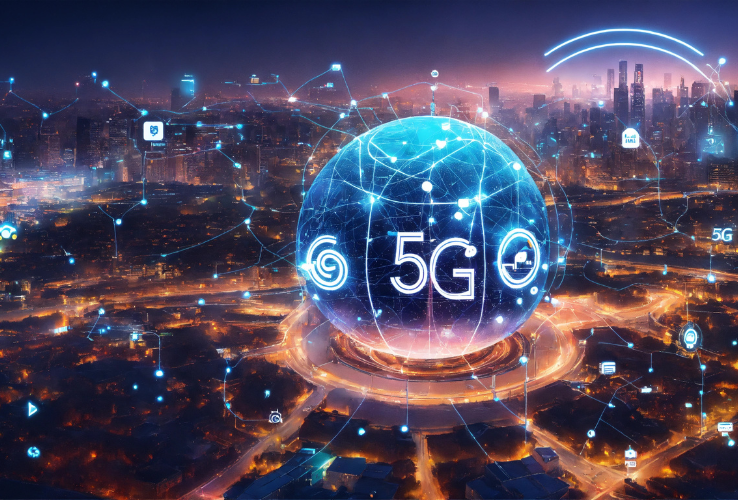5G-Driven Innovation in Media Production
In the fast-paced world of media production, where time, quality, and efficiency are paramount, the introduction of 5G technology is proving to be a transformative force. From enabling real-time collaboration across continents to powering ultra-high-definition (UHD) streaming, 5G is reshaping workflows and unlocking possibilities that were once limited by the constraints of connectivity.
This evolution is more than a technological upgrade; it’s a fundamental shift in how media is created, shared, and consumed. For media producers, broadcasters, and content creators, 5G is not just an enabler of better workflows—it’s a gateway to reimagining the very nature of production.

The 5G Advantage: A New Era of Connectivity
At its core, 5G is about speed, reliability, and low latency. Unlike its predecessor, 4G, which provided faster mobile internet, 5G introduces capabilities designed for industrial and creative applications. The near-zero latency and significantly higher bandwidth of 5G enable seamless real-time data transfer, making it ideal for industries like media production, where large files and instant collaboration are critical.
For example, a 5G-enabled camera can stream raw footage directly to a post-production studio while filming is still in progress, eliminating delays in dailies or rushes. This instantaneous transfer accelerates decision-making, reduces the time to final output, and supports higher-quality productions.
Transforming Media Production Workflows
1. Real-Time Collaboration
In traditional media production, geographical barriers often slow down workflows. Editors, directors, and VFX artists working in different locations rely on large file transfers or cloud uploads, which can introduce delays. With 5G, collaboration becomes truly real-time. Teams can access and edit footage directly from the source, even while shooting is underway, ensuring that creative decisions are made faster and more efficiently.
For instance, during live sports broadcasting, 5G allows remote directors to guide camera operators in real time, ensuring dynamic and engaging coverage without being physically present at the venue.
2. Enhanced Field Production
Shooting on location often presents logistical challenges, particularly when it comes to transferring high-resolution footage. 5G eliminates the need for physical hard drives or slow internet connections. UHD and even 8K video can be transmitted directly to cloud storage or production servers without compression, preserving quality while saving time.
Additionally, drone operators equipped with 5G can stream high-definition aerial footage directly to production teams, enabling on-the-spot decisions and faster project turnaround times.
3. Virtual and Augmented Reality (VR/AR) Integration
The rise of VR and AR in media production has introduced new demands for data processing and connectivity. 5G’s low latency ensures that VR/AR applications run smoothly, whether it’s a live virtual concert or an augmented reality-enhanced film set. These technologies can now be integrated into production workflows without the lag or interruptions that previously hindered their use.
4. Edge Computing for Post-Production
Post-production tasks like rendering, editing, and visual effects require significant computational power. 5G, combined with edge computing, allows these processes to be offloaded to nearby servers rather than centralized data centers. This reduces latency and ensures faster processing, enabling editors and VFX artists to work in real-time, even on complex projects.
Success Stories: 5G in Action
5G-Powered Remote Broadcasting
During the Tokyo 2020 Olympics, 5G technology was used to enable remote production of live events. Broadcasters utilized 5G to transmit high-quality video feeds from the event venues to production hubs in real-time, reducing on-site staff requirements and increasing efficiency.
Innovative Film Production
In the UK, the BBC has experimented with 5G for live broadcasting and remote production of dramas. Using 5G-connected cameras, directors and editors worked collaboratively from different locations, significantly reducing the time between filming and final output.
Real-Time News Reporting
For news organizations, 5G has revolutionized field reporting. Journalists equipped with 5G-enabled devices can stream live video in UHD from remote locations, providing audiences with instant, high-quality coverage.
Challenges and Considerations
Despite its transformative potential, the adoption of 5G in media production is not without hurdles:
Infrastructure Readiness
While 5G networks are expanding rapidly, coverage remains uneven, particularly in rural or less developed areas. Media productions in such locations may still face connectivity challenges.Cost of Implementation
Upgrading equipment and workflows to leverage 5G can involve significant upfront costs, particularly for smaller production houses. However, these costs are often offset by long-term efficiency gains.Learning Curve
Adopting 5G requires a shift in mindset and workflow design. Production teams need to be trained in the new capabilities and limitations of 5G-enabled systems.Data Security
The increased reliance on cloud storage and real-time data transfer introduces potential vulnerabilities. Ensuring robust cybersecurity measures is essential to protect sensitive media content.

The Future of 5G in Media Production
As 5G networks become more widespread and accessible, their impact on media production will continue to grow. Emerging trends include:
- AI-Driven Workflows: Combined with AI, 5G will enable smarter, more automated production workflows, from intelligent editing to real-time scene composition.
- Holographic Media: With 5G, the concept of holographic streaming could become a reality, revolutionizing everything from live concerts to film premieres.
- Decentralized Studios: Productions will increasingly rely on virtual studios, where teams work collaboratively from remote locations, facilitated by 5G connectivity.

